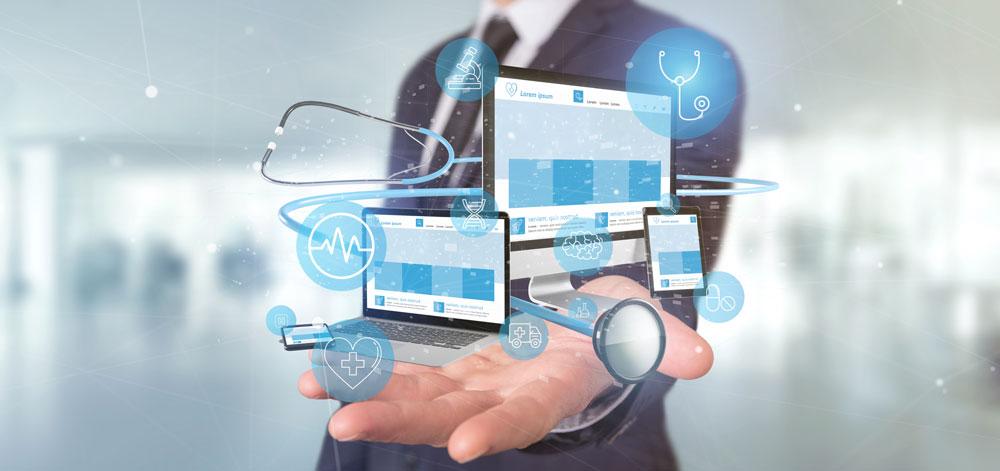Valerie Phillips, a MedTech expert at PA Consulting, outlines the opportunities for new ways of delivering care and improved health outcomes
Diagnostics have long played an integral part in decision-making along the entire continuum of a patient’s health and disease management, including prevention, screening, diagnosis, prognosis, triage, treatment, and monitoring. However, this has largely been behind the scenes, in clinical domains, in the hands of professionals.
During the last 12 months, diagnostics have been crucial to meeting the demands of the pandemic, with unparalleled global demand for accurate, rapid testing to enable decision-making. Testing for Covid-19 has become a part of regular life and has provided a bridge into everyday decision-making, such as self-isolation, school attendance, international travel, and partaking in social events.
The widespread use of Covid-19 testing across population groups has brought diagnostics into the mainstream and represents an opportunity for the industry, healthcare providers and end users to build on this experience to ensure diagnostics are used in a more widespread manner, beyond Covid-19, to transform healthcare management and delivery.
Improved health outcomes
The timely and accurate use of diagnostics has the potential to greatly improve healthcare outcomes and save many patients’ lives. Through screening and earlier diagnosis, diagnostics act to reduce the extent and severity of treatment interventions which are required at later stages of diseases and are used to inform and determine care pathways. Through early detection and ongoing monitoring, diagnostics can keep patients safely out of acute care sites and provide valuable long-term monitoring and accurate and targeted treatment plans. These approaches would also provide improved health outcomes and efficiencies in the health system, through better use of resources, a reduced need for lengthy treatments, and application of the right treatments in a timely manner to avoid disease progression.
Disease areas where regular diagnostic screening plays a key role include cholesterol testing (cardiovascular disease), faecal occult blood testing (bowel cancer), prostate specific antigen levels (prostate cancer) and diabetes testing. Recent novel diagnostic innovation includes blood markers to detect Alzheimer’s disease, rare disease screening in embryos, and AI tools to monitor cardiac functions or analyse radiology images to detect lung disease. Moreover, there is an emerging trend towards combing a range of sophisticated diagnostic tools, such as blood markers, liquid and tissue biopsies, imaging modalities and digital diagnostics, to inform potential new treatments in neurodegenerative diseases.
The potential for diagnostics to deliver better outcomes would be undisputed by many, yet practice tells a very different picture. According to the British In Vitro Diagnostics Association, in pre-pandemic times, 70 per cent of clinical decisions were influenced by the use of in vitro diagnostics, yet less than one per cent of healthcare budgets are spent on diagnostics. For many years, focus has been on treatment rather than prevention or early diagnosis, and while attitudes to this are starting to change, reimbursement structures revolve around activity, rather than disease prevention.
Outcomes speak clearly. The UK lags behind many EU countries in terms of both preventable mortality (ranking 14th overall) and treatable causes of mortality (ranking 19th overall), and these have not improved in recent years. Moreover, five-year cancer survival rates are worse in the UK compared to other high-income countries in the EU.
Government and policy recognise this and responses are being formulated. The NHS Long Term Plan now has a strong focus on the treatment and prevention of illness to reduce the risk of early ill health and diseases such as cancer, cardiovascular health, stroke, respiratory disease and mental ill-health.
For example, the NHS aims to have three-quarters of all cancers diagnosed at an early stage through: the creation of new Rapid Diagnostic Centres across the country so patients displaying symptoms of cancer can be assessed and diagnosed in as little as a day; the introduction of a new, faster diagnosis standard which will ensure that patients receive a definitive diagnosis or ruling out of cancer within 28 days; and lowering the age for bowel screening, introduce new forms of cervical cancer screening and extend lung health checks.
A 2020 policy paper published by government, The Genome UK; the future of healthcare, states that the UK will incorporate the latest genomics advances into routine healthcare to improve the diagnosis, stratification and treatment of illness. The three main areas of focus for the strategy to create the most advanced genomic healthcare ecosystem in the world, are diagnosis, prevention and research.
More recently, the NHSX published its strategy on Who Pays for What to clarify the costs and responsibilities around the implementation of digital solutions and pathways to support Integrated Care Systems (ICS). To reduce barriers to digital transformation, the newly launched Unified Tech Fund sets out the funding available under a single portal, bringing together a range of funding streams worth £680 million, of which a very high proportion - 35 per cent (£235 million) - is dedicated to diagnostics. This is a clear acknowledgement of the importance of diagnostics in patient-centred care. Given the learnings from the Covid-19 response, the widespread use of diagnostics and the pressures on the health system, now may well be the time that new ways of working are adopted rapidly with a reduction in barriers to implementation.
New Ways of Working
As the UK begins to learn to live with Covid-19 and move out of the pandemic crisis phase to management and recovery phase, there is huge appetite to find new ways of working in healthcare. This desire is systemwide, including policy makers, clinicians, healthcare providers and patients, driven not least by the backlog in the system which has arisen because of Covid-19. There is huge pent-up demand for hospital procedures, with reports of NHS waiting lists reaching 14 million next year.
Timely and accurate diagnostics can play a key role in a smart and innovative future healthcare system. The widespread use of diagnostics during the crisis phase, the ubiquitous adoption of regular testing, and the establishment of testing infrastructure can provide building blocks for a new approach to healthcare management and delivery.
Regular testing can be adopted across other disease areas, beyond Covid-19. Screening programmes can be more widely deployed. Covid-19 has demonstrated that testing can be undertaken in a huge range of settings, including home, community and even drive-thru settings. Patients are more engaged in their own health and have a desire to remain out of hospital care, in the safety of their own homes. Moreover, patients become engaged in their health and are empowered with insights which can lead to behavioural changes and adherence to preventative and disease management programmes.
Post diagnosis, regular monitoring can inform both clinicians and patients of the rate of disease progression and inform individual targeted and effective treatment plans. There is scope to deliver these outside of acute settings, such as home and community settings.
The opportunity to bring about new ways of delivering healthcare and improving its outcomes through integrated diagnostics is clear. However, it requires transformation across entire care pathways and will need to bring together many stakeholders in support of this transformation. Moreover, it will require specialist expertise from a wide range of domains, now needing to work collaboratively, towards a common goal. Experience tells us that this is difficult and has not yet been realised. However, the response to Covid-19 has demonstrated how the system can effectively pull together when required.
Valerie Phillips is a MedTech expert at PA Consulting.





